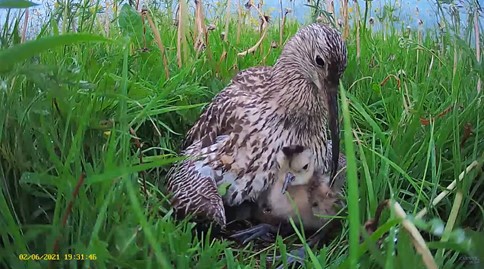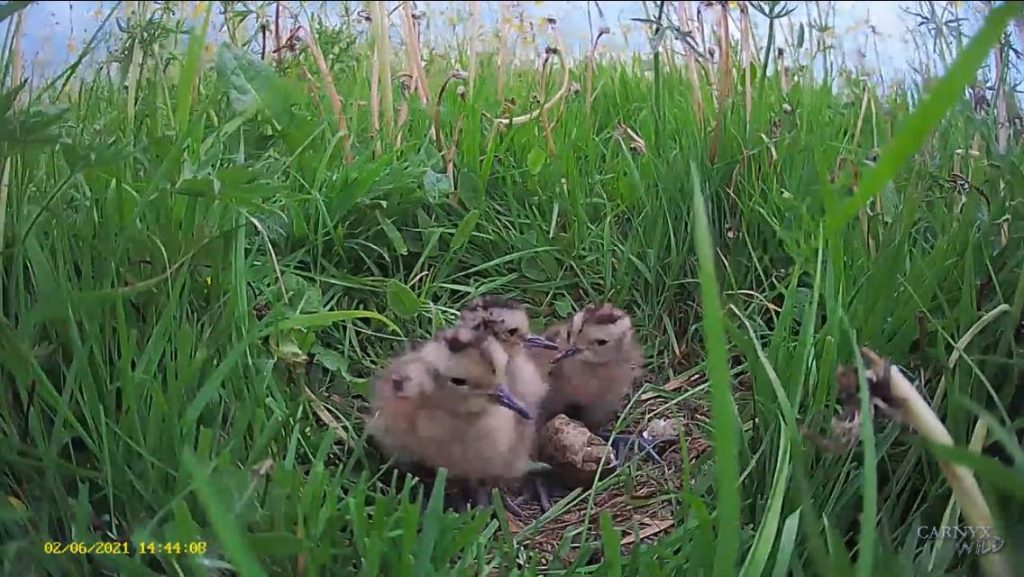The wait is over, thank you for everyone who has joined the Curlew pair on Curlew Cam to watch their amazing diligent parenting through the incubation stages, and especially to Peter in Canada who wrote the first email I opened this morning to say that one chick had arrived safely.
After 28 days of waiting patiently for action, three fluffy bundles with big feet are making attempts of independence, most probably to find food. The adult desperately tries to keep the chicks brooding to enable the last chick to hatch to dry out and gain its strength for the forage exploration. Its guard partner is out looking out for possible danger, fending off avian predators and warning its partner in the nest.
This is not an end but a new beginning. The chicks are precocial, meaning they will feed themselves from now on with the adults never participating. The parents will however continue to ‘guard’ them, looking out for potential danger and leading them to safe places and/or good foraging spots. The most observant among you may have spotted the radio tags on the back of the chicks. This will enable us to track them and update you on their progress during the coming days. We know that they will be vulnerable to accidental disturbance or worse from agricultural activity and predation. Since last year’s Curlew Cam there have been some changes in the area where this pair have nested, and we are a bit more hopeful that their fate may be improved.

We hope that you will stay with us to track the progress of the family and learn more about Curlew Country’s work and how we have progressed from no chicks hatched in 2015 and 2016 to sixty plus in the following years.
Chicks are not just appearing on Curlew Cam. We have eggs in the hatching and brooding incubators, chicks in tanks acclimatising to the next step of outdoor life and chicks in pens in the field before their release back into their natural environment at fully fledged stage. We pioneered the process known as headstarting for Curlew in the UK in 2017. It is not a solution to Curlew sustainability. It is a desperate intervention implemented to save Curlews from extinction whilst we continue to strive for natural nest success which will require a change in agri-environment schemes. However, we do have some chicks and sixty must be better than none…
[paypal_donation_button]

